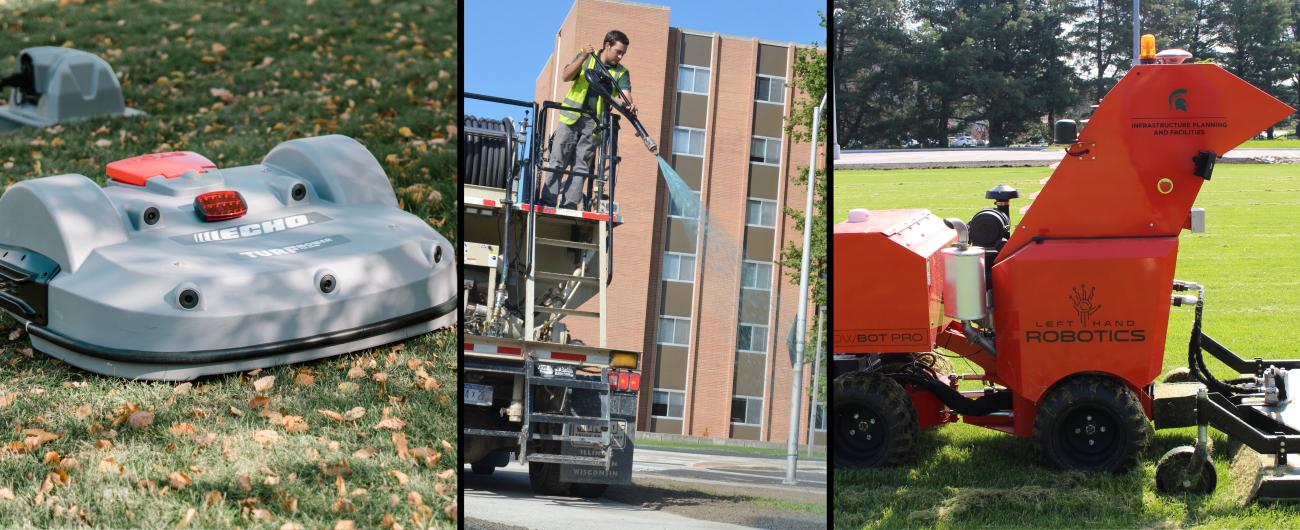From cutting grass to “cutting-edge”

Anthony Yuhasz
November 20, 2019
IPF Landscape Services manager Matt Bailey and his staff are employing new green industry technologies that have the potential to save money and more efficiently deploy staffing, all while continuing to keep the campus landscape beautiful and safe.
In 2018, they purchased an autonomous snow removal machine called Snowbot, which can clear light snow from walkways, freeing up staff to tackle critical snow removal needs. In the summer, the robot can be converted to a mower, allowing it to independently maintain some of the larger turf fields on campus, thus freeing up staff who can focus on other landscaping needs.
They are also testing a Roomba-like device called the Echo Turfmower, a quiet, self-charging, battery-powered mower that can maintain smaller expanses of lawn. It has the potential to be used around residence halls and other areas where normal mowing operations could create undesired noise disturbances.
Their desire to employ new technologies also extends into seeking safer and more sustainable alternatives to traditional turf/plant maintenance chemicals, including:
- Sustainable soil amendments created from landfill and biomass energy production waste that increase fertility and water retention while decreasing compaction. These also serve to sequester salt (from winter sidewalk and road application) until it can be released in a more dilute form.
- Alternatives to traditional herbicides, some made from natural sources such as citrus and spices, as well as biodegradable products, certified for organic farm use, that do not build up in soils.
- Plant growth regulators, which promote root growth while slowing top growth, resulting in less mowing and thus lowering carbon emissions.
- Pre-emergents which keep weeds from germinating, applied in granular form under mulch. These require less overall herbicide use and greatly reduce the need for future spraying.
Their use of an electronic dashboard display that visually tracks metrics on litter bin service, stormwater maintenance, watering, drought protection and autonomous mowing, allows them to strategically dispatch resources where they are most needed.
